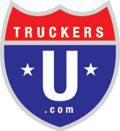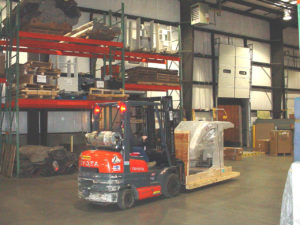by Timothy Brady
Many small fleets run on ‘day-to-day’ load planning. It’s like a pilot flying by the seat of his pants; it may get him to where he needs to be but–after a nail-biting, really bumpy ride–it won’t be a flight he wants to repeat.
Don’t be like him.
On any given morning in the world of trucking, a small fleet owner/manager sets down his cup of coffee and lists which trucks are going to be empty that day. Then he starts searching for tonnage for them. This kind of ‘plan’ is almost worse than no plan at all. The probability of his trucks running half-filled or needing to deadhead to another pick-up without a really profitable load waiting there, or sitting in the lot waiting to be dispatched as the hours’ drag by, is painfully large. He’s got to switch to a master plan: one that not only looks at today but one that looks as far into the future as possible. If he hasn’t located the return load before he accepts that first outbound load … his small carrier is going to be hurting financially in short order.
You know better than to copy his mistakes.
Every mile a truck is driven costs money, whether it’s fully loaded or not. Every time the truck is rolling there’s money going out the stacks. So your plan must be to keep the trailer loaded and rolling in all directions. If you don’t know what or where your driver’s next load is going to be after he’s picked up his current load, you’ve completed only half your job. Just like driving that rig down the highway, if you’re not keeping your eyes on the horizon, that’s when you get in trouble. It isn’t any different when you’re looking for loads. If you wait until your driver’s in-route or worse; until his trailer’s empty, to begin the load search, that’s when you get into trouble. And you drag down your carrier into real trouble.
Your lane density plan
Lane density is the art of load planning, which keeps the truck full with profitable tonnage whenever it’s rolling, whatever direction it’s rolling. This means you’re looking for return tonnage while considering what you’re going to load outbound. Better yet; you are looking two or three or more trips into the future, planning loads for each truck so that every trailer has a load assigned to it long before it has reached its destination.
Your route management plan:
Route management keeps that loaded truck on the most direct path between pick-up and delivery; minimizing distance traveled, thus saving on operational costs and driver’s Hours of Service.
The idea that a straight line is the shortest distance between two points really works here. You must match your loads so as the truck commences its pick-ups and deliveries, it deviates very little from the straight line. When your driver has to stray from the line to pick-up or deliver, the rates you charge that shipper reflect the time and distance required out of route. As said above: every mile a truck is driven costs money, whether loaded or not. Once a load is delivered, both the number of days from that delivery date and the number of miles required to complete the next trip all belongs to this new load. Those days and miles will have to be figured into the costs of the next load too.
Tips to make your load planning a little easier:
- Look for tonnage before you need it.
- Don’t look for loads at the last minute.
- Always plan two to three loads ahead for each truck.
- Think multi-directional, on outbound and return.
- Don’t send any truck out without a return plan.
The take away:
Setting up dedicated routes that meet the needs of both your lane density plan and your route management plan will take time and effort on your part; probably lots of coffee and some sandwich lunches at your desk. But remind yourself you’re also planning for better profits. And isn’t that why you own and manage your carrier?
Timothy D. Brady © 2020
The Introduction to Trucking Business
This is a quick and simple means of getting your small motor carrier on track. “This is NOT a beginners’ course, but a course on how to operate your trucking company successfully.
Click on the button below to register for the course
Click Here for Course Information.

